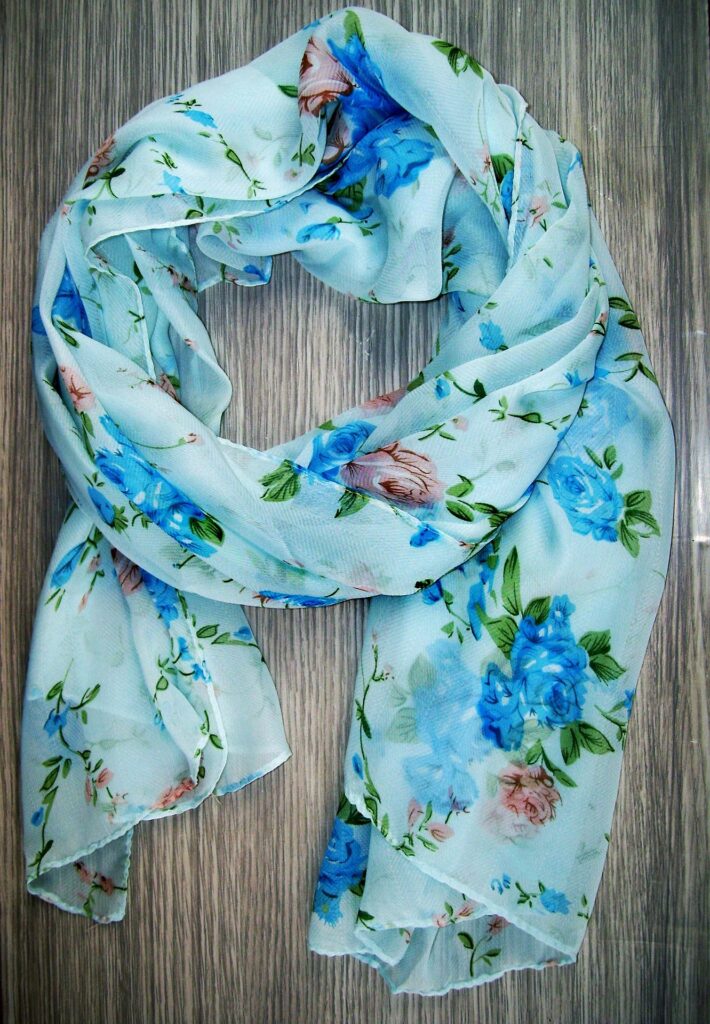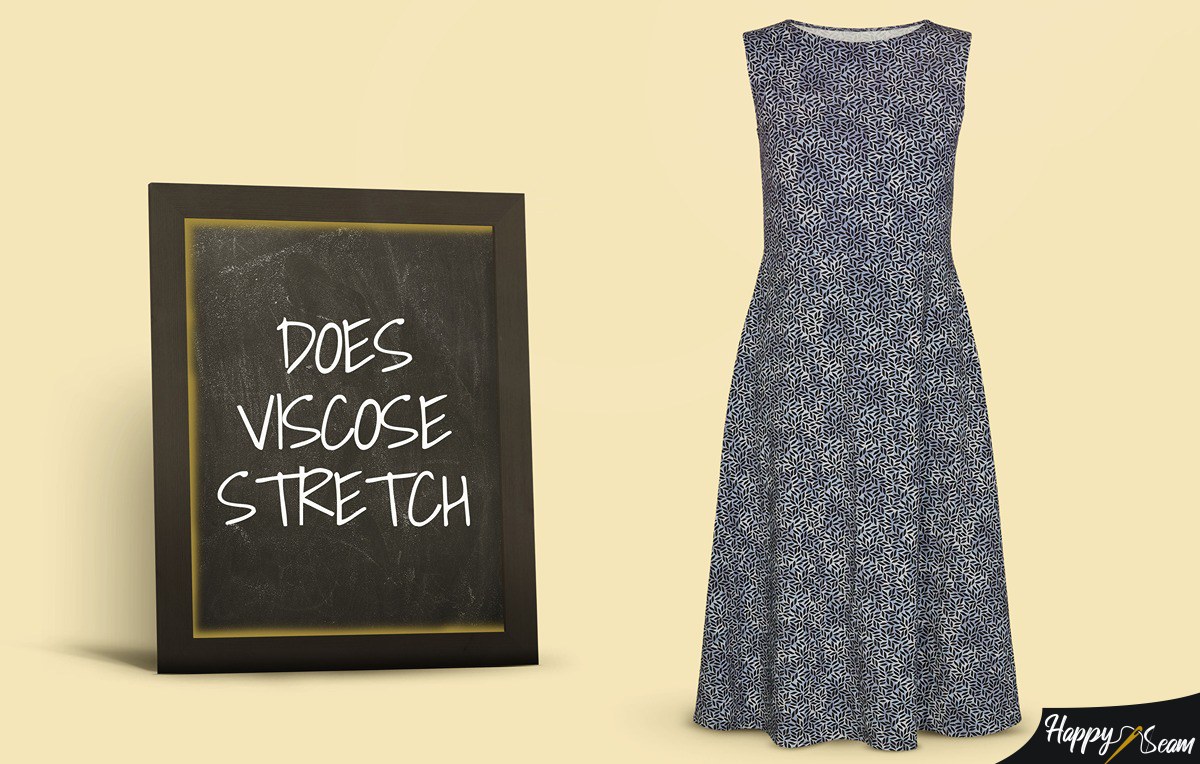Viscose has been around since the late 1800s and to this day it has been a staple in many homes and wardrobes. It was first made as a cheaper alternative to silk, as we will find out later, it comes from a natural and abundant source. There are a lot of different fabrics in the textile industry that’s why it is very useful to know how to take care of your clothes so they last longer. So what about that viscose dress that feels just a little tight around the waist? Will it stretch out with time?
The elasticity of viscose often is up to the type of fabric blend. On its own, it is not very stretchy, but when mixed in with a stretchy type of fiber such as those in spandex, it does gain elasticity.
Key Takeaways
- Viscose is a semi-synthetic fiber that comes from tree pulp.
- It was made as a cheaper substitute for silk.
- Viscose is more stretchy when it is compared to a woven fabric.
- 100% viscose is not stretchy, however, some blends are.
- It is best if you take your viscose material to the dry cleaner.
Understanding Viscose

Where does it come from and how is it made?
Viscose is made from tree pulp. It is a semi-synthetic fiber due to the number of chemicals used for its products such as sodium and hydroxide. The procedure usually goes as follows. First, the plant which is usually pine, beech, eucalyptus, or bamboo, is chopped into a wood pump and dissolved with chemicals.
This pile of dissolved pulp is then washed and bleached. After this, with a chemical process, the cleaned pulp is made into a solution called viscose, which is forced through a spinneret to make regenerated cellulose. The only thing left after this is to spin it into yarn to make a cohesive thread.
Not so simple right? This is the reason why this type of fabric lies somewhere in the middle between natural and synthetic fibers. The rigorous process of making the thread puts the word “synthetic” in the mixture and the name “semi-synthetic” is born.
What are the pros of viscose?
First of all, viscous holds up dye very well, so you can make sure that your favorite bright red garment won’t fade after one wash. It is very soft, lightweight, and breathable. It does not trap heat, but it absorbs water, making it the perfect fabric for workout clothes. Also, esthetically wise, it can hold its shape very well and it looks like silk.
Is viscose stretchy or tight?
Make sure to try to gently stretch the material before you purchase it or simply read the label. As we’ve mentioned earlier, if it is mixed with a stretchy fabric such as spandex, it will stretch. Also, the knit on the fabric can have some stretch to it, making the material a bit more elastic. However, under normal circumstances, 100% viscose stretches less than 3% of its original size.
Can You Put Viscose in the Dryer?
The nature of the viscose fabric and the fact that it goes through a rigorous chemical process makes the fibers very absorbent, leading them to rapidly absorb moisture and thus making the cloth weaker. It will be best for you to take your viscose garments to the dry cleaner or wash them by hand very carefully. Also, if you choose to wash them at home, make sure to air dry them and do not put them in the dryer unless you have a special no-tumble program that mimics dry cleaning.
Viscose clothing also does not stretch over time, so don’t expect to fit in your tight 100% viscose dress anytime soon. But, if you wear your favorite viscose shirt to the gym every day, the water from the sweat can weaken the natural fibers giving it a stretch-out feel over time. Generally, the material is not stretchy and holds its shape pretty well. Be careful though, if you wash viscose with hot water in the mashing machine, it may shrink a little every time it goes through a cycle.
Is viscose a cheap fabric?
Given that it was made as a cheaper substitute for silk, we would say that viscose clothing is not expensive.
Is viscose unhealthy to wear?
The fabric itself is not unhealthy or toxic, but there are concerns about the production process. As we mentioned the production process is lengthy and it involves dangerous chemicals that can pose a threat to the workers and the environment. Recently manufacturing was moved from Europe and the U.S to Asian countries like India, China, Pakistan, and Indonesia, where the regulations aren’t so strict. The chemicals used can damage the skin, eyes, liver heart, and nerves of the workers if not protected properly.
Is it sustainable?
Sadly no. Even though viscose is part natural, it leads to deforestation and loss of biodiversity. The fibers are biodegradable, but that does not always mean good news. Even though some studies find that viscose can break down faster than cotton, the chemicals used in its manufacturing process and the often rigorous dyeing that goes into the material end up in the soil.
Conclusion
Don’t buy viscose clothes that are too tight on you, thinking they will stretch out in time. 100% viscose will not stretch. However, it might shrink if you wash it in hot water. Viscose is made from tree pulp and goes through a rigorous chemical procedure to be made into the fabric we use daily.
Even though it is semi-natural it is not environmentally friendly, so make sure to only invest in high-quality viscose garments that will last you a long time or buy secondhand. Also, when taking care and cleaning viscose, it is best to take it to get professionally cleaned at the dry cleaners as cleaning it in the washing machine will ruin the knots in the fabric, making it appear distressed.
All in all, viscose is a soft, breathable, and absorbent fabric, making it the perfect choice for a warm summer day. It feels light and smooth on your skin and, the best part, it retains color very well so your clothes will look brand new even if it’s been a couple of years since you bought them.
Further Reading
Given that the focus of this post is on viscose fabric and its stretchability, you can also find out if polyester stretches or even if linen stretches.
The dry cleaning aspect is another topic you might want to look into. It’s crucial to know if you can dry clean silk and leather.
Check out the proper method for fabric storage in general as well as how to store sweaters.
I graduated from London College of Fashion, and I’ve been working for a Fashion Design company for 10 years. My other hobbies are going to the gym and reading.



